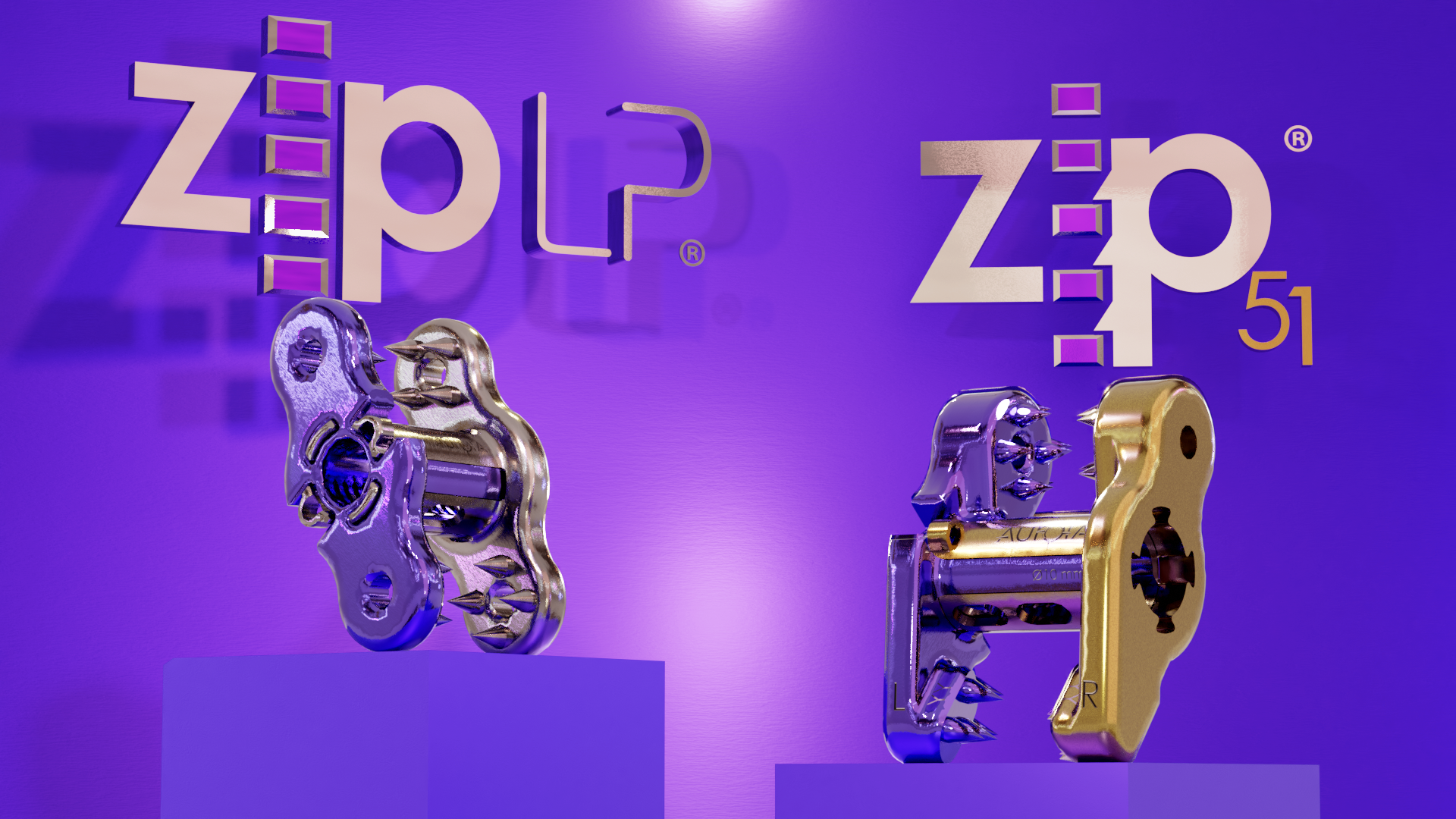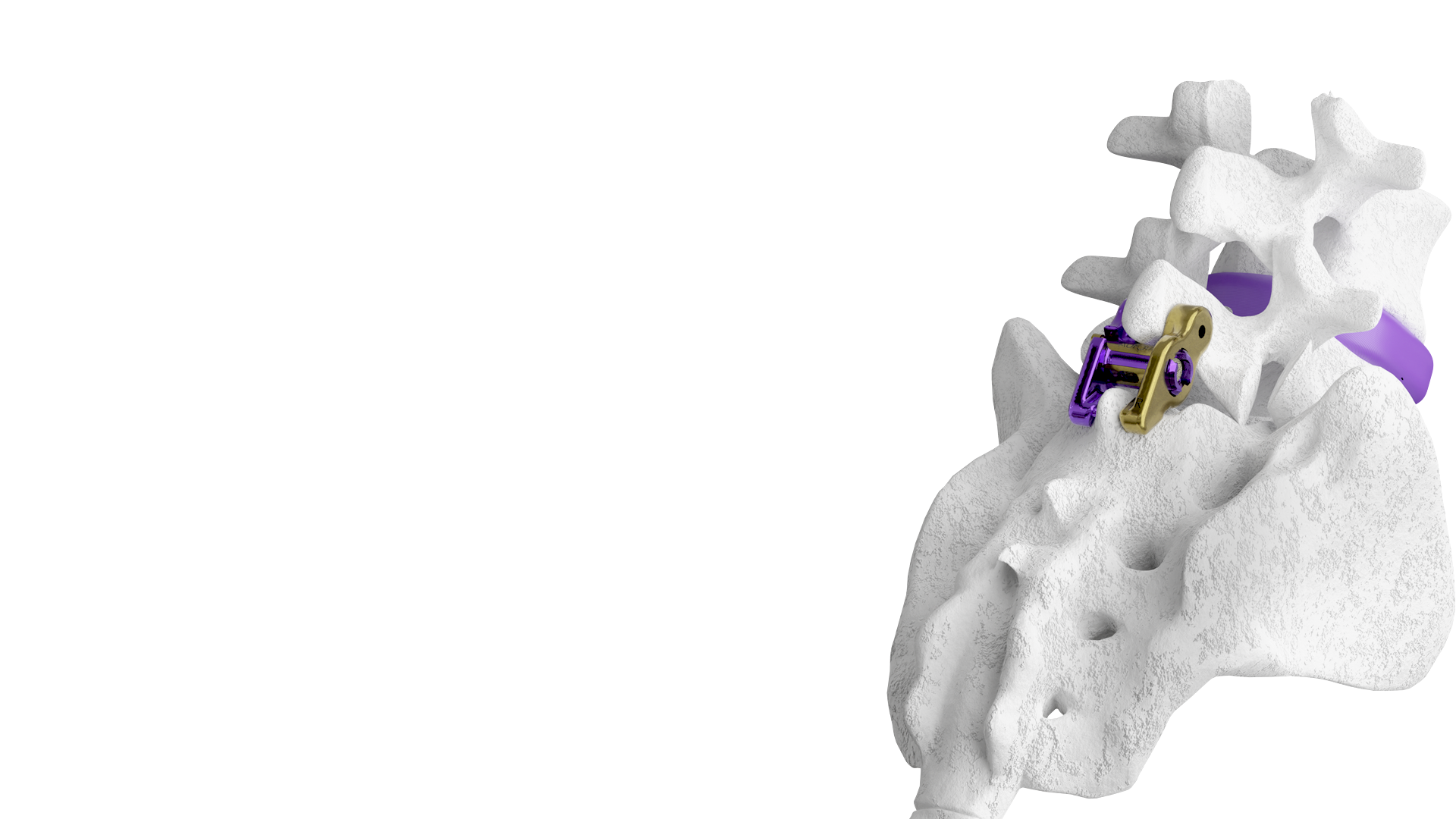
“Minimally invasive lumbar fusion using an Aurora Spine zip™ interspinous fusion implant is the most advanced procedure available to patients suffering from chronic low back and leg pain. Patients are able to quickly improve their quality of life with an outpatient surgery without having to undergo major back surgery. ”

THE SCREWLESS PROCEDURE
The zip™ Product Line is Aurora Spine's slimmest minimally invasive interlaminar fixation implant for spinal fusion and was developed as an alternative to pedicle screw fixation.
In a pedicle screw fixation, screws are drilled into the pedicles of the vertebrae to act as anchor points for the connection of additional rods and other hardware. This type of fixation has been the most widely used method of stabilization; however, there has been an increase in the use of ISP devices as a less invasive alternative. The ISP devices are positioned between the spinous processes.
Minimally invasive ISP devices have been shown to preserve normal anatomy, resulting in shorter surgery times, less pain, and faster healing times compared to pedicle screw procedures.
The proprietary zip ONE-STEP™ locking mechanism eliminates the use of a set screw. Each zip™ implant features a large barrel designed for zip GRAFT™ or other bone material. The zip™ comes in different sizes to suit the diverse anatomies of patients. Its plate width is set at 3.5mm for optimal design.
The zip™ implants are designed for stabilization and load sharing during T1-S1 thoracolumbar fusion procedures, specifically for the treatment of:
Degenerative disc disease
Lumbar spinal stenosis
Spondylolisthesis
Trauma and tumor
zip™ LP is a minimally invasive, screwless implant.

WE ALSO OFFER THE GOLD STANDARD FOR L5-S1 FUSION
Specifically designed for better bone anchorage in the Sacrum
A study on 32 patients (21 ISP and 11 bilateral PS) from Wang et al. found that the ISP plate is not only easy to implant but is also associated with minimal operative risk.[1] Compared with bilateral PS/rod constructs, the ISP plate fixation leads to less EBL and shorter operative time without an increase in the rate of pseudarthrosis. Hospital length of stay (LOS) was also shorter, which aligned well with the goals of minimal access to spinal technologies.[1]
Clinical outcome in the interspinous fusion device group and pedicle screw group after surgery for EBL, OP time, and LOS.
EBL: estimated blood loss, OP time: duration of the operation, LOS: length of hospital stay.
Vokshoor et al. observed that 91% (41 of 45) of levels treated with lumbar interbody fusion supplemented by an interlaminar fixation device demonstrated solid bridging bone on 2-year post-operative CT imaging.[2] Similarly, Kim et al. showed comparable fusion rates between the patient in the ISP (92.5%) and PS group (91.6%).[3]
Fusion success outcome: ISP-Grade 1 indicates small islands of bone; Grade 2 shows larger islands of coalescence with bringing to the surrounding anatomy; Grade 3 indicates some solid incorporation and obvious stability and maturity; Classification of interbody fusion success was based on the BSF scale by Brantigan, Steffee, and Fraser (SPINE 1993;18:2106-7)
ISP and pedicle screw groups had comparable improvement in Oswestry Disability Index (ODI) and Visual Analogue Scale (VAS) score outcome scores 1 year after surgery. However, ISP patients who had immediately after ISP procedure more improved VAS score (4.6+/-3.7) than the pedicle screw group (7.0+/-3.5) with the difference being statistically significant (p<0.05).[2,3]
Clinical outcome in the interspinous fusion device group and pedicle screw group on year after surgery (p<0.05) for VAS and KDI.
Preop: preoperation, Postop: postoperation, ISP: interspinous fusion device.
1. Wang JC, Haid RW, Jr., Miller JS, Robinson JC. Comparison of CD HORIZON SPIRE spinous process plate stabilization and pedicle screw fixation after anterior lumbar interbody fusion.
Invited submission from the Joint Section Meeting On Disorders of the Spine and Peripheral Nerves, March 2005. Journal of Neurosurgery Spine 2006; 4(2): 132-6.
2. Vokshoor A, A. E, S. K, P. F, D. W. Evaluation of Radiographic Evidence of Interspinous Fusion in Various Constructs of Minimally Invasive Lumbar Surgery. 28th Annual Meeting of American
Association of Neurological Surgeons. March 2012 ed. Orlando, Florida; 2012.
3. Kim HJ, Bak KH, Chun HJ, On Su, Kang IH, Yang Ms. Posterior interspinous fusion device for one - level fusion in degenerative lumbar spine disease: comparison with pedicle screw fixation - preliminary report of at least one year follow up. Journal of Korean Neurosurgical Society 2012; 52(4:








